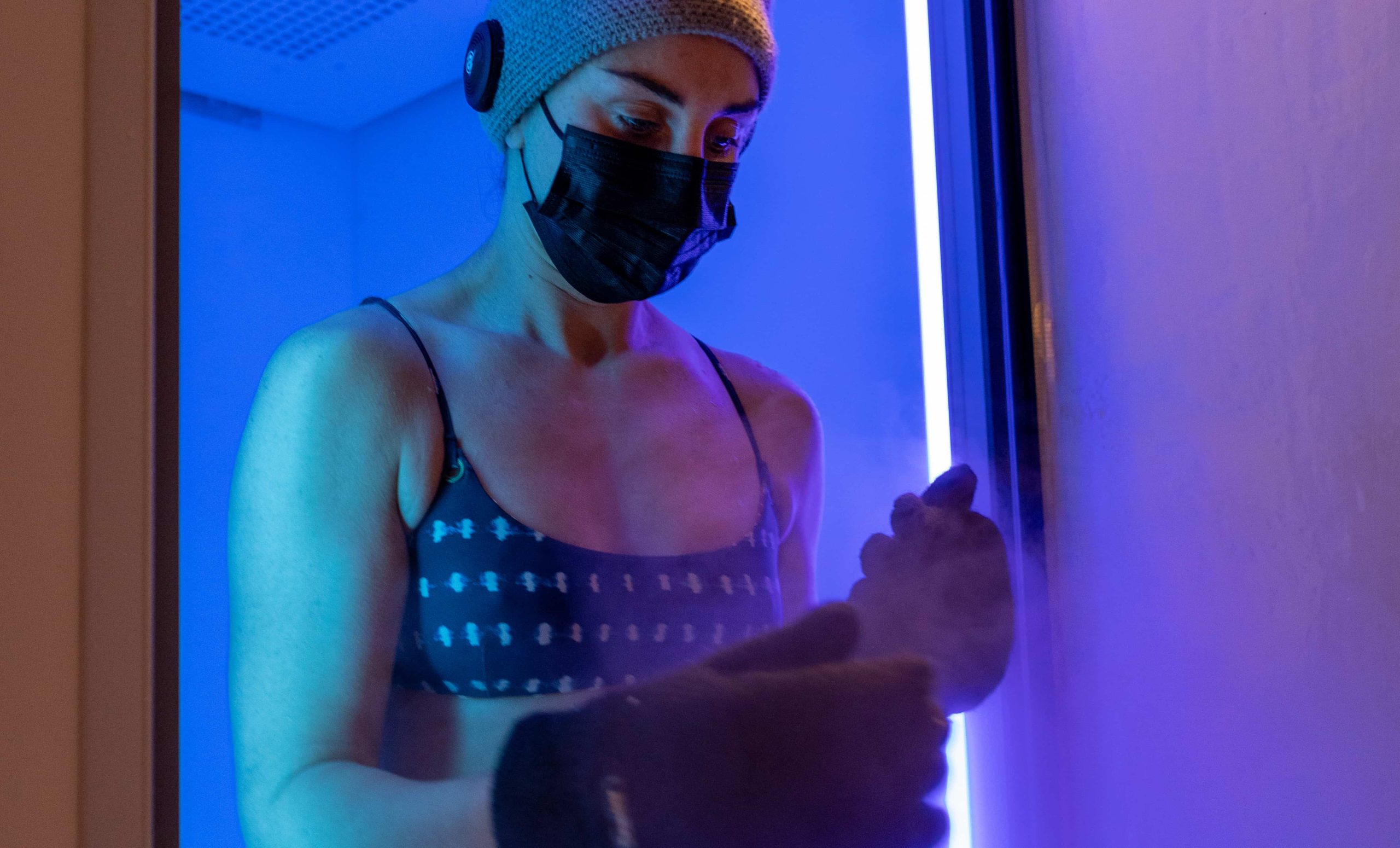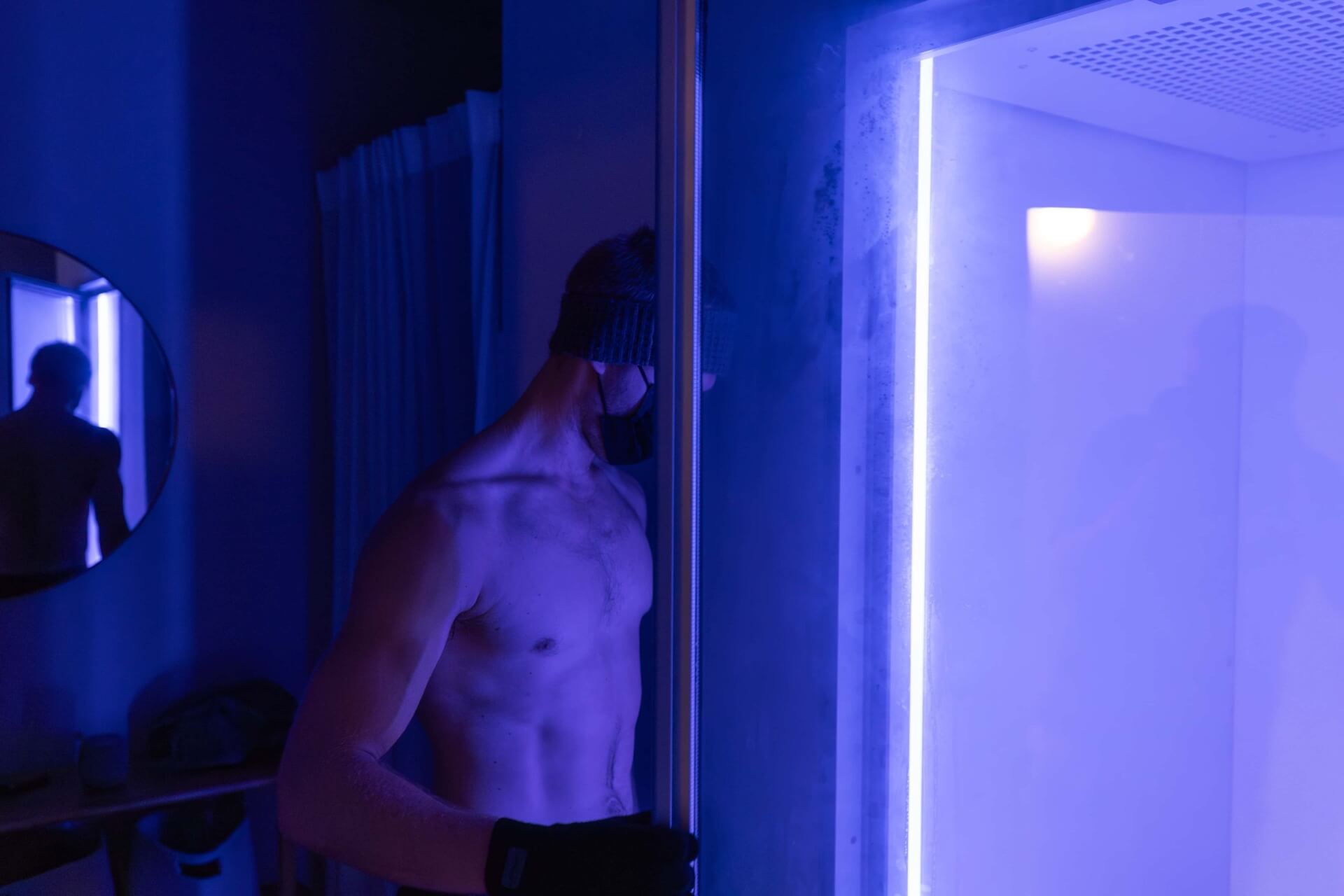Please complete the form below and our team will get back to you within 24 hours
Do you want a way to start feeling more rejuvenated and ready to take on the world? It’s time to give Cryotherapy a try. Exposing yourself to freezing temperatures may not seem like a logical choice to find a way to relax, but Cryotherapy has a multitude of cognitive and physiological benefits.

Cryotherapy stimulates vasoconstriction of the blood vessels from your extremities (arms and legs) to your heart to try to keep your core warm. When you exit the chamber, there is vasodilation, so the blood flows back to these extremities. This benefits muscle recovery, clearing out metabolites while also improving the blood flow of oxygen and nutrients to the muscles.
In practical terms, it gives your muscles a power boost. Meaning you can become stronger and train harder for longer.
Whole-body cryotherapy can facilitate a reduction of systemic inflammation, and lower concentrations of markers for muscle cell damage. Multiple exposures can lead to improvements in recovery from pain and loss of muscle function.
Inflammation left unchecked can contribute to chronic diseases, and by undergoing regular body cryotherapy sessions, the body can facilitate faster muscle healing. Cryotherapy is commonly used by professional athletes wanting to boost the body’s recovery speed from muscle pain and increase entire body performance.
The use of 3 minute whole-body cryotherapy after training in the evening reduces pain, and improves parasympathetic nervous activity and sleep quality in physically active subjects.
Sleep latency can be limited just by standing in a whole-body cryotherapy chamber. As the extremely cold temperature increases, core body temperature drops and this can help regulate your circadian rhythm.
The controlled stream of cold air helps stimulate the production of collagen, flushing skin toxins and renewing elasticity.
Because it can improve antioxidant levels in the blood while simultaneously reducing inflammation, both localised and whole-body cryotherapy are perfect remedies for those suffering from chronic skin conditions such as eczema, dermatitis, and psoriasis.
Antioxidant levels can spike to a harmful degree through air pollution, diet, excessive sunbathing and harmful lifestyle choices. Multiple studies have shown that through regular whole-body cryotherapy treatments, oxidative stress can be reduced.
Highly effective treatment for muscle and joint pain, cryotherapy can offer immediate relief as it stimulates a semi-hypothermic response to the cold air. Blood flow will increase to keep the body’s core temperature up and thus remove toxins stored in the joints. When treatment is undergone regularly, arthritic pain can soon be a thing of the past.
Read our guide on the benefits of cryotherapy for more information.
Restore
Our Cryotherapy is a therapeutic practice that involves exposing your body to extremely low temperatures. You’ll enter our cryogenic chambers, ranging from -80 to -110 degrees Celsius, for a short duration (typically between 3 to 5 minutes). This sudden exposure to the extreme cold triggers a systemic response where the blood vessels constrict. Upon exiting the cryotherapy chamber, the blood vessels will dilate to rewarm itself.
Our entire-body cryotherapy chamber will help bring you the more focused, revitalised, and energised you you’ve been searching for.
Book a session at our Brisbane Cryotherapy clinic now, and discover the benefits for yourself!

We use the most up to date research to match protocols with health outcomes.
Please complete the form below and our team will get back to you within 24 hours
Please complete the form below and our team will get back to you within 24 hours
Please complete the form below and our team will get back to you within 24 hours
Engine
We cannot serve you if are: Pregnant, under the age of 16, or seriously ill. If you fit these categories please do not book. Before using our facilities you will be required to sign our liability waiver
196 Montague Rd, West End, Qld
91 Noosa Drive, Noosa, Qld
We cannot serve you if are: Pregnant, under the age of 16, or seriously ill. Before using our facilities you will be required to sign our liability waiver.